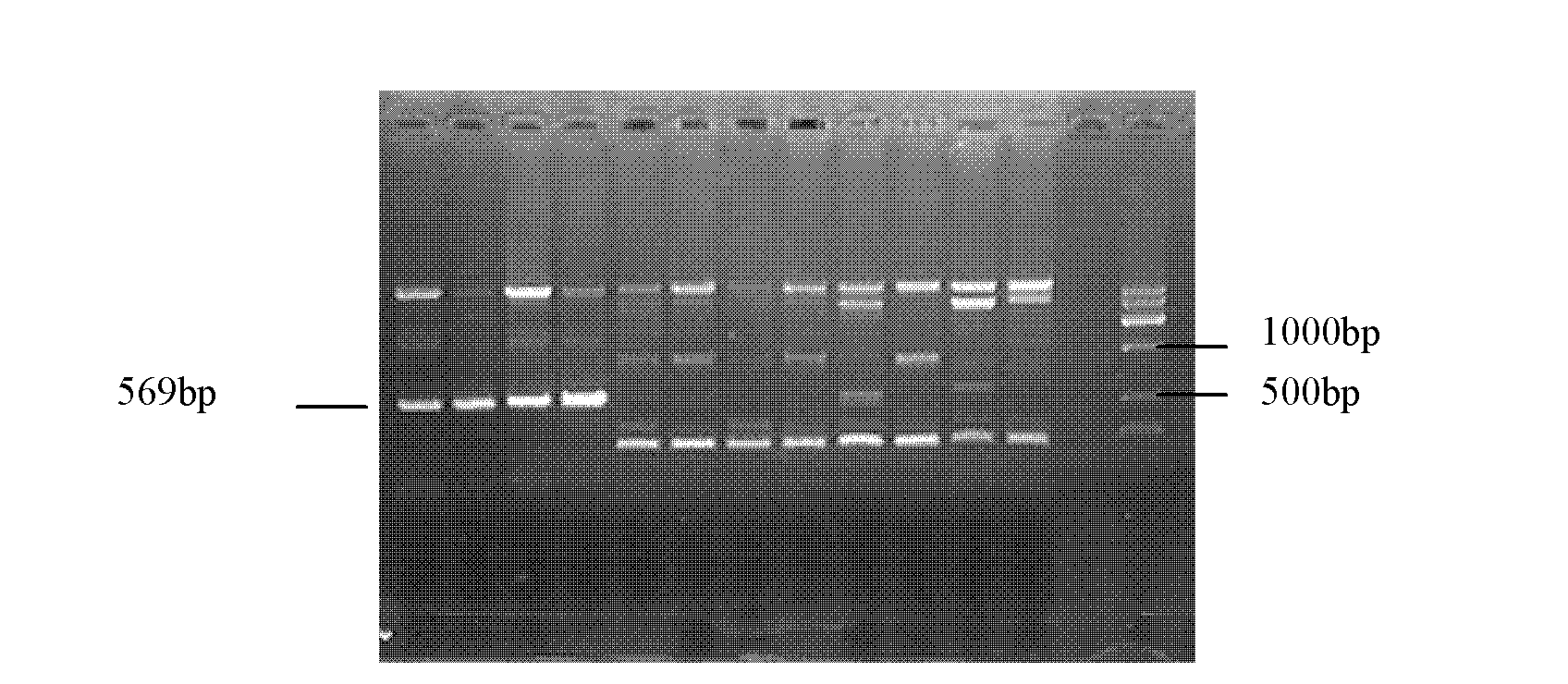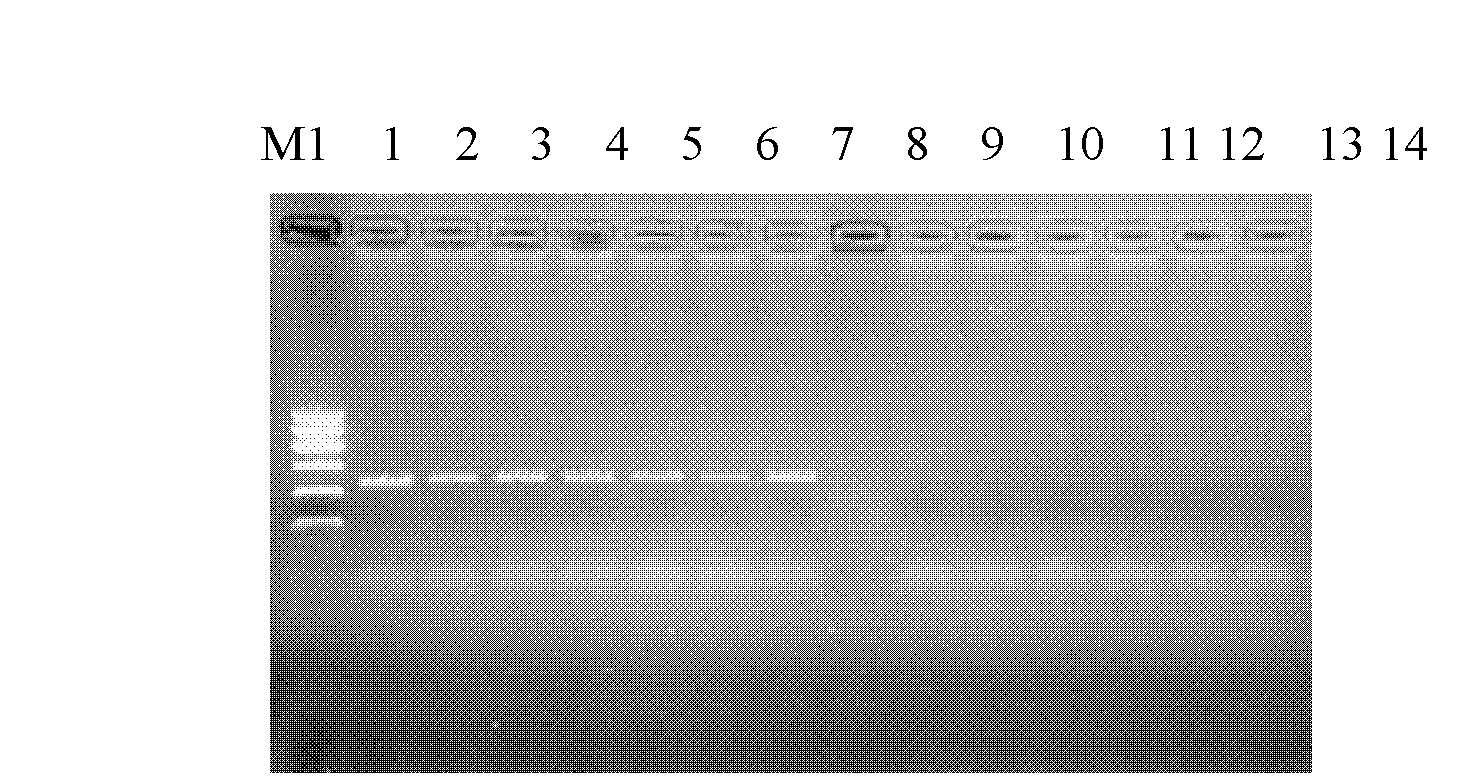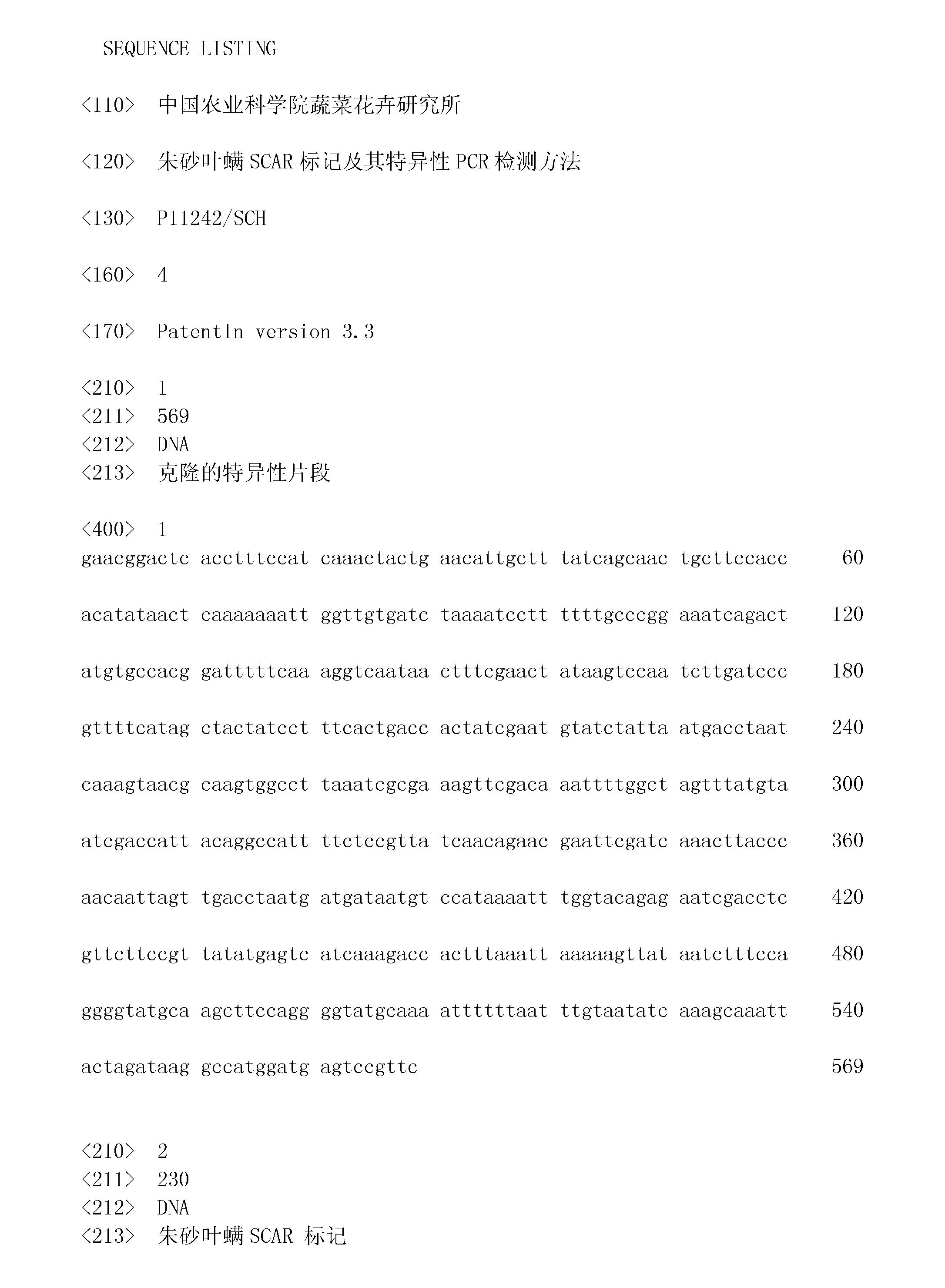Carmine spider mite SCAR (sequence characterized amplified region) mark and specificity PCR (polymerase chain reaction) detection method thereof
A technology of Tetranychus cinnabarinus and detection method, which is applied in the direction of biochemical equipment and methods, microbial measurement/inspection, etc., and can solve the problems of inability to conduct accurate analysis, time-consuming, labor-intensive, and long-term consumption
- Summary
- Abstract
- Description
- Claims
- Application Information
AI Technical Summary
Problems solved by technology
Method used
Image
Examples
Embodiment 1
[0021] Example 1 Cloning of specific fragments of Tetranychus cinnabarinus
[0022] 1. Materials
[0023] 1.1 Tetranychus tested
[0024] Tetranychus cinnabarinus was provided by the School of Plant Protection, Nanjing Agricultural University. The sympatric control species Tetranychus urticae and Tetranychus truncation were provided by Nanjing Agricultural University and the Plant Protection Institute of Fujian Academy of Agricultural Sciences respectively. These three species were detected by traditional microscope The morphological characteristics of the male external genitalia and the color of the female adult mites are observed to identify them.
[0025] Hawthorn Tetranychus was used as the control species of allopatric spider mites, which was provided by the Fruit Tree Institute of Shandong Academy of Agricultural Sciences.
[0026] The above-mentioned spider mites are all known spider mites, and all of them are preserved in our laboratory and can be released to the pub...
Embodiment 2
[0042] Example 2 Designing primers based on Tetranychus cinnabarinus specific fragments and obtaining SCAR markers
[0043] Based on Seq ID No.1, design a pair of specific primers:
[0044] Cinnabar-230F(5’-CGG AAA TCA GAC TAT GTG-3’)
[0045] Cinnabar-230R (5’-CTG TTG ATA ACG GAG AAA-3’),
[0046] The reaction system was set at 25 μl, of which 2×ES Taq Master Mix (including ES TaqE 5U / μl) was 12.5 μl, 230F / 230R was 1 μl, and DNA template was 1.25 μl.
[0047] The reaction program was as follows: pre-denaturation at 94°C for 3 min, followed by 30 cycles (denaturation at 94°C for 1 min, annealing at 57°C for 45 sec, extension at 72°C for 1 min), and finally extension at 72°C for 10 min. The expected amplified fragment size is 230bp.
[0048] The specific SCAR primer pair: Cinnabar-230F (5'-CGG AAA TCA GAC TAT GTG-3') and Cinnabar-230R (5'-CTG TTG ATA ACG GAG AAA-3') was used to control the indoor preservation of Tetranychus cinnabarinus Populations were amplified by PCR, ...
PUM
 Login to View More
Login to View More Abstract
Description
Claims
Application Information
 Login to View More
Login to View More - R&D
- Intellectual Property
- Life Sciences
- Materials
- Tech Scout
- Unparalleled Data Quality
- Higher Quality Content
- 60% Fewer Hallucinations
Browse by: Latest US Patents, China's latest patents, Technical Efficacy Thesaurus, Application Domain, Technology Topic, Popular Technical Reports.
© 2025 PatSnap. All rights reserved.Legal|Privacy policy|Modern Slavery Act Transparency Statement|Sitemap|About US| Contact US: help@patsnap.com



